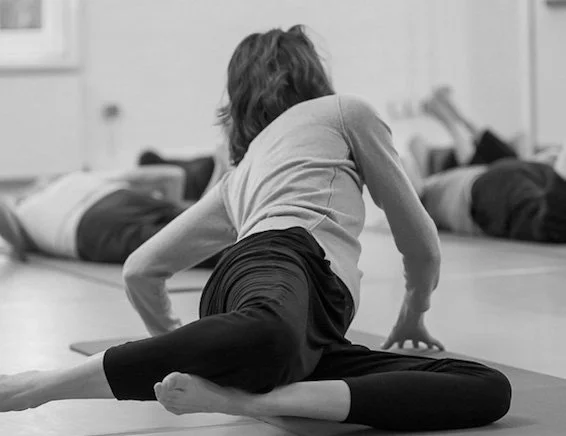Welcome to the Esalen workshop
(Mobile users press “+” at upper right to see the menu.)
Here is Dr. Feldenkrais’s iconic Esalen workshop, his first foray into teaching in the United States in Big Sur, California, in 1972.
This 45-lesson series is a phenomenal compendium of Dr. Feldenkrais’s thinking about the progression of human maturity, offering multiple opportunities to rewire all of our early learning.
In most cases, I have endeavored to capture Dr. Feldenkrais’s exact pacing and structure so that you can have the truest experience of this workshop. While I might teach these lessons very differently to my client demographic, it is useful to hear how he presented them to the workshop participants at the time. Of course, the language and cues are all mine. Where I quote Dr. Feldenkrais for added perspective, I note it as such.
These lessons might be more challenging than others in the Treasury, in part because:
some are more active and require more muscle work (not effort, work)
some are more neurologically challenging, meaning that the suggested sensory or motor distinction might be confusing or elusive at first.
some ask you to be in a novel position that requires a creative modification on your part, or at the very least they invite a fun puzzle
Don’t worry if at first it’s confusing, a physical challenge, or a mind-bender. After all, it’s why you are retraining your physical awareness in the first place: to bump up against your limitations and learn new options. If you never had any discomfort or fatigue or pain or tension, you wouldn’t be bothered to do these lessons in the first place!
Going through this series, you will uncover a lot of information about your habits and patterns. The point is not to eliminate these habits and patterns, but to uncover new options. As I frequently tell my students, how you move an arm or a leg or sit or stand is only wrong if it’s your only choice. Nothing in the human repertoire is inherently wrong.
When you’re stuck with one option, it doesn’t feel good. It promotes fatigue, injury, and pain. Many people think they have to strengthen their muscles to “get better” instead of doing this funny thing called clarifying the self-image. Because really, what good would that do?
I can tell you with total certainty that it will do you a world of good as it fosters your unique human ability to rewire your choices. Animals do not have this ability. It is our human birthright.
So, I suggest you invoke your best sense of lightness, humor, and play, and take care of yourself as you go through this series. It is not necessary to do the lessons in order, though it is an interesting study.
(Read my short note on how to do a lesson for a quick reminder.)

